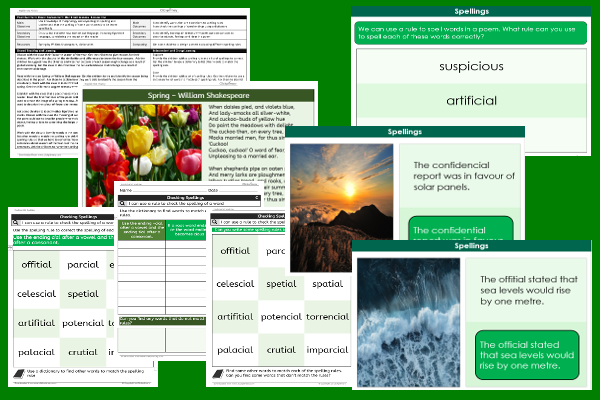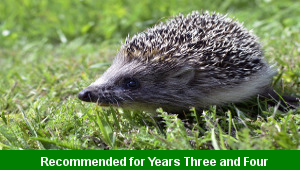Lesson One – Word Corrections

This English teaching pack for Key Stage Two gets the children to investigate how to identify the correct spelling of different words with cial and tial suffix endings to match rules including for some words that are exceptions.
The class can explain how poets use special language and word phrases to describe and compare objects, ideas and feelings in poetry.
Download this teaching pack including a lesson plan, classroom activities and an interactive presentation to investigate how to identify the correct spelling of different words with cial and tial suffix endings to match rules including for some words that are exceptions
Activities in this teaching pack include a shared reading text to identify and explain how poets use special language to describe and compare objects, ideas and feelings when reading the poem Spring by William Shakespeare and a set of differentiated worksheets to practise using rules to make a list and correct the spellings of matching words with the cial and tial suffix endings.
The interactive presentation gets the children to explore the correct spelling of different words with cial and tial endings to match rules including for some words that are exceptions.
This lesson is part of an English scheme of work to get the children to select figurative imagery to describe different seasons of the year for use in poetry, investigate spellings of words with different suffix endings and use modal verbs to compose lines of poetry. There are teaching activities for shared learning, differentiated worksheets to support independent learning and interactive presentations to introduce concepts and key skills.
-

Rounding Hundreds
Explain and model how to round some different numbers to the nearest hundred based on the place values of the digits in each number
-

Rounding Tens
Identify and record how to round some different numbers to the nearest ten based on the place values of the digits in each number
-

Classic Animal Stories
Investigate the structure and content of classic works of fiction by significant authors with animals as the main characters
-

Cities, Towns and Villages
Research and present the history of a range of different buildings and people that are part of the local community using a school exhibition
